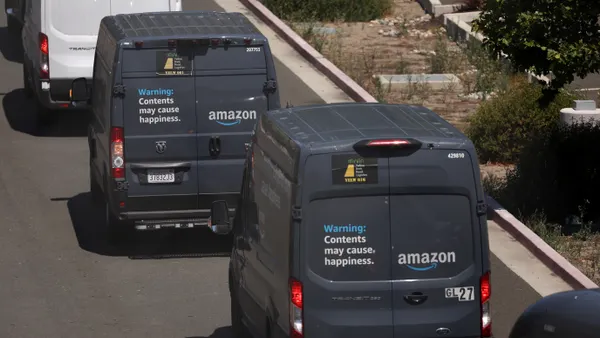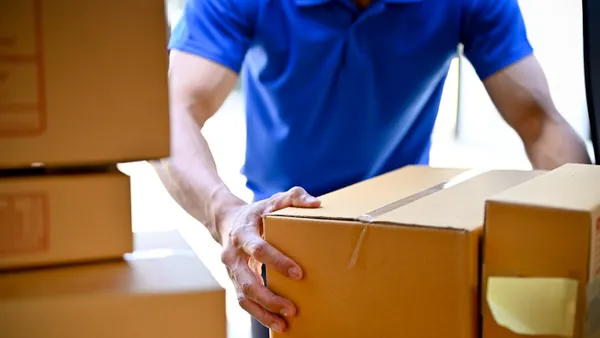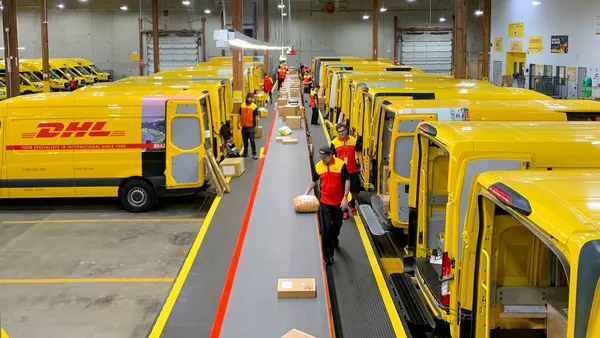Dive Brief:
- Target is testing a new sort center concept downstream from stores in order to better facilitate efficient last-mile delivery, COO John Mulligan said on the company's Wednesday earnings call. These sort centers are intended to remove parcel sorting from stores and enable higher throughput of e-commerce packages and more efficient shipping to lower costs per order.
- The facilities will be smaller than an average Target store, and parcel density will determine their locations. The first test will take place in Minneapolis, the site of Target's headquarters and location of some of the retailer's supply chain R&D projects. Deliv's routing tech, which Target will acquire, will help with route optimization and potentially reduce the cost of last-mile delivery, Mulligan said.
- Target shipped 80% of e-commerce orders in the first quarter from stores amid a 141% year-over-year rise in e-commerce revenue, the company reported Wednesday. Same-day fulfillment grew by 278% year over year in the quarter. On an average day in April, Target fulfilled more orders than Cyber Monday 2019.
Dive Insight:
Target expected the level of digital order volume it saw in the first quarter — just not for three years, CFO Michael Fiddelke said. The pandemic has sped up digital and omnichannel adoption by consumers immensely, executives explained, adding that drive-up orders alone posted 1,000% growth in April.
CEO Brian Cornell held up the first quarter as proof of the store-fulfilled model he has been touting for several quarters. And with Walmart and a host of smaller, non-essential retailers shifting more e-commerce volume toward store fulfillment, his campaign may be gaining support.
Target's ability to ship orders from stores in 2020 at what it believes to be 2023 volumes may quiet some of the analysts who questioned the chain's ability to execute store fulfillment at scale, but operational adjustments are not yet finished as executives ponder how much pandemic-driven digital order volume will stick.
Sort centers are one possible addition to the fulfillment model to smooth out volume spikes, and Mulligan said the company is adding more pickup space to parking lots and more storage space to stores as physical space could constrain execution amid volume growth.
"From a process perspective — a team perspective — there are no limiters," Mulligan said.
Although some spatial changes are on the way in the near-term, expansion of an automated store replenishment system revealed in March is temporarily on hold since further deployments would necessitate travel prevented by the pandemic. Mulligan said the robotic system, which sorts millions of units into boxes assigned to store aisles for faster unpacking in-store, will roll out to four more warehouses when travel resumes.
A data-driven inventory allocation project is also largely on pause due to the pandemic, the COO said.














